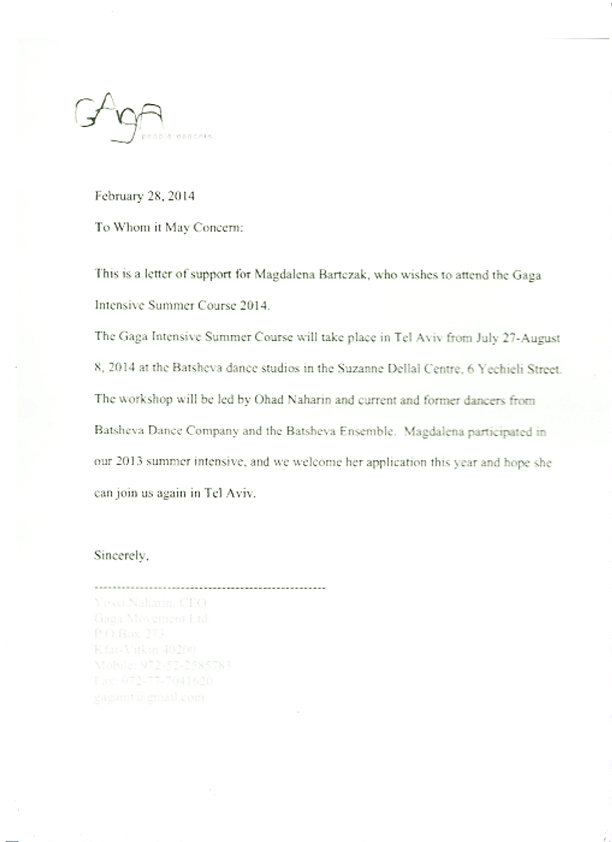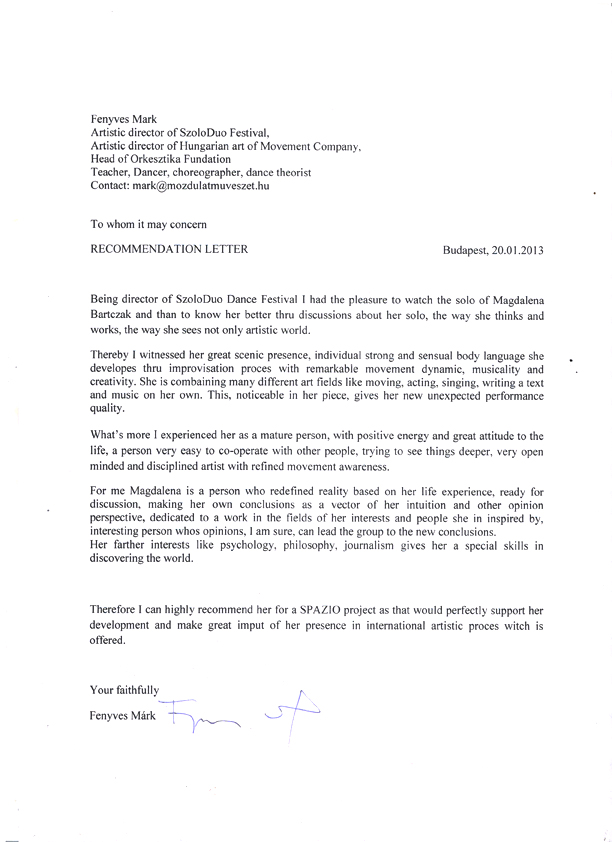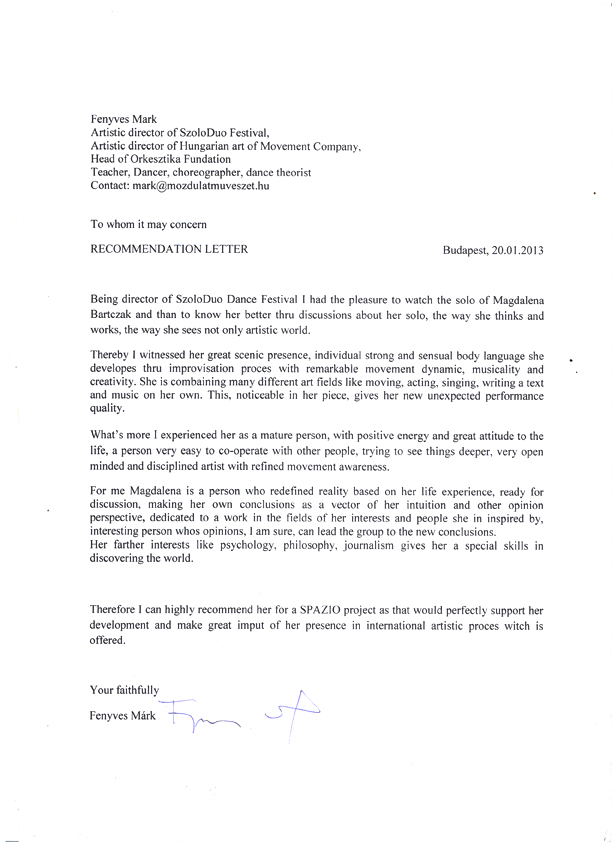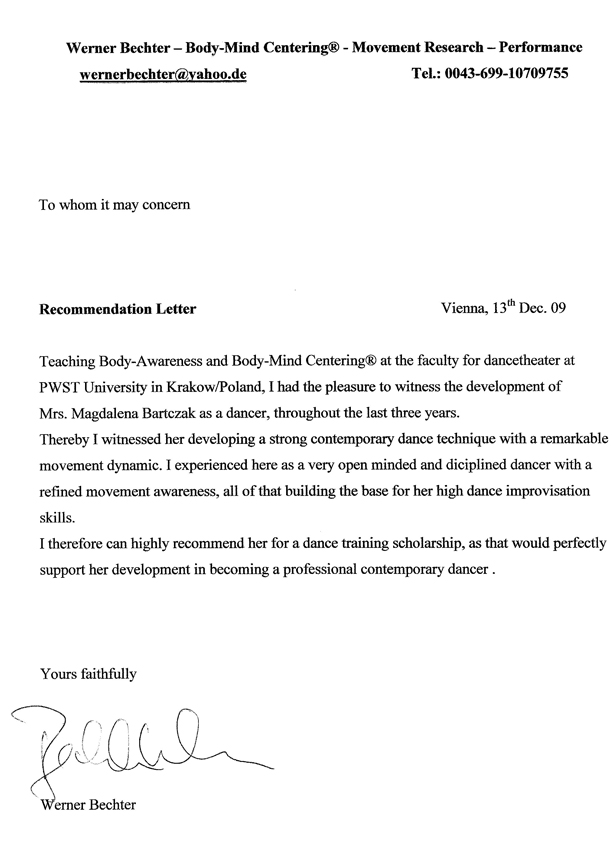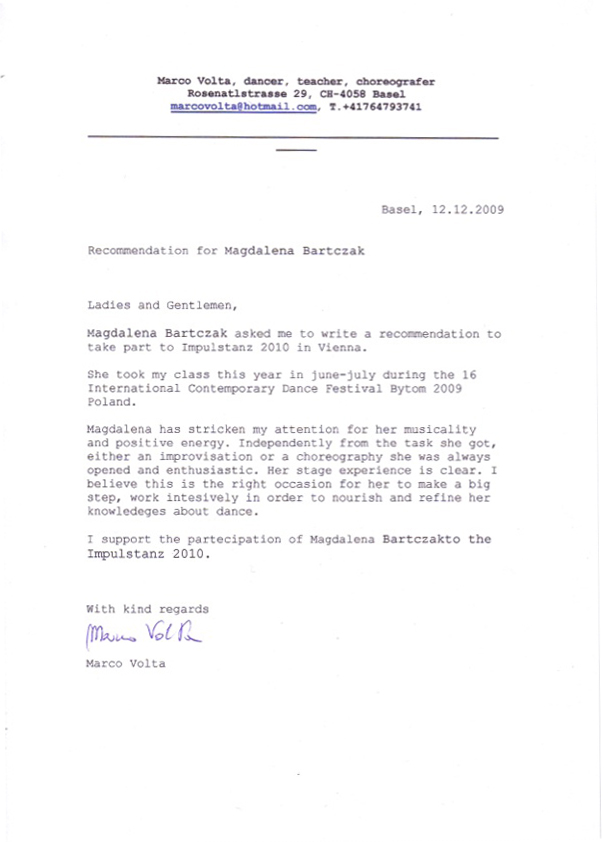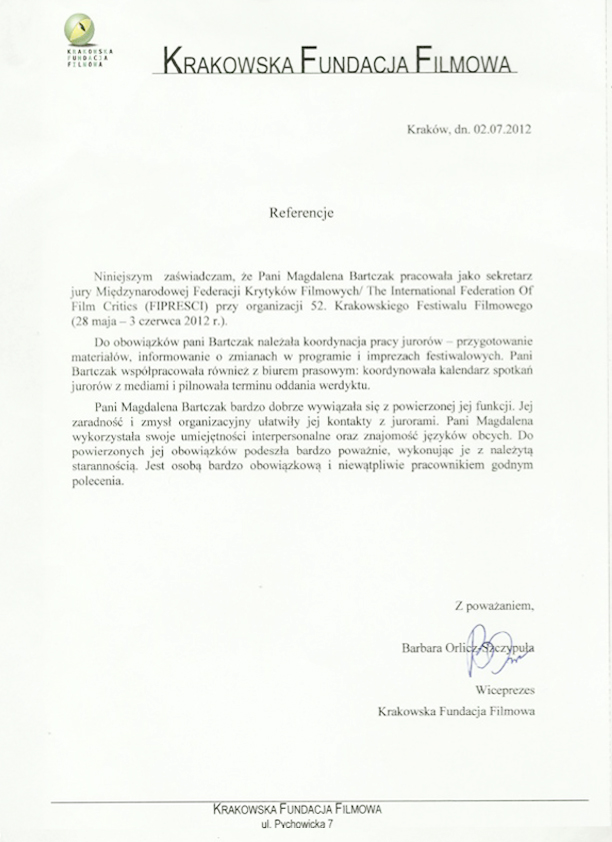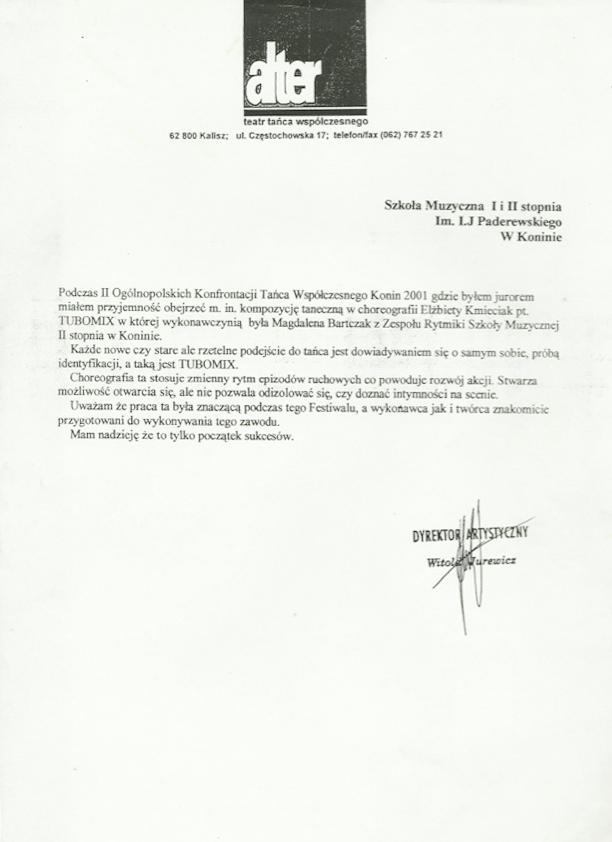
Konrad Wilewski Biblioteka WTT
Good day
Magdalena Bartczak’s master’s thesis entitled “Cultural aspects of
Polish dance technique” was used in a presentation form, i.e. on the spot in the reading room by students, preparing their own future master’s and first-year theses, lecturers of the W.T.T. in Bytom (including Janusz
Skubaczkowski), employees of the Silesian Dance Theatre in Bytom – while preparing papers for a conference on women’s health at the Bytom City Hall on 25.05.2012. The work “Cultural aspects of Polish dance
technique” enjoys the greatest interest among the master’s theses
available in the W.T.T. Library
Konrad Wilewski WTT Library

Jacek Dziubdziela Galeria ArteFactory
“Magda is a person who communicates with her body. Balancing between emotions, she tells her story. Patient, a humble artist who deserves to work with people of high sensitivity.”
Anna Kędziora – Fotograf
„Working with Magdalena Bartczak was characterized by a high degree of professionalism on the part of the model. She collaborated creatively with the photographer, not only following suggestions, but also introducing a lot of her own initiative into the created photographs. It was clearly evident that the model had a lot of freedom in front of the camera, as well as an exceptional acting talent, which manifested itself in the ease of changing her image and embodying new roles.”
dr Agnieszka Jelewska Katedra Dramatu Teatr i Widowisk UAM Poznań
The master’s thesis of Ms. Magdalena Bartczak, titled „Cultural Aspects of Polish Dance Technique,” is an exceptional work. It is the first attempt in Poland to analyze the most important formal, aesthetic, and philosophical aspects of Polish dance technique, which has been consistently shaped and developed by Jacek Łumiński since the 1980s. The author takes on the challenge of constructing a monograph that identifies the significant cultural inspirations for this technique, as well as the ways in which they are transformed, recontextualized, and remediated within the choreographic structures of Jacek Łumiński. She very precisely outlines the references to traditional Polish music and dance from the Podhale and Kurpie regions, as well as the culture, religion, philosophy, and dance of Polish Hasidic Jews. Bartczak shows how multifaceted Łumiński’s perspective is, spanning between multicultural Polish tradition and the works of artists such as Drzewiecki, Grotowski, and Kantor. The author finds all of this in his choreography, dramaturgy, and performative structures, which allows for an understanding of the depth of the style of Polish dance technique. In the work, it appears as a consequence of Łumiński’s anthropological and ethnological field research, which allowed him to create a dance theater that, through its specific movement, conveys the entire complex mosaic of Poland’s multicultural history, its internal tension, and the continuous collision of fragments of various traditions.The work of Magda Bartczak is written from the perspective of a practitioner who is well-versed in the style, choreographic, and dramaturgical approach to Łumiński’s art, and thus it is a dissertation that is written from a position of experience and engagement in the analytical process of the paradigm of embodied knowledge. It is an original work of high scholarly quality, (after some stylistic and editorial corrections) I strongly recommend it for publication.
